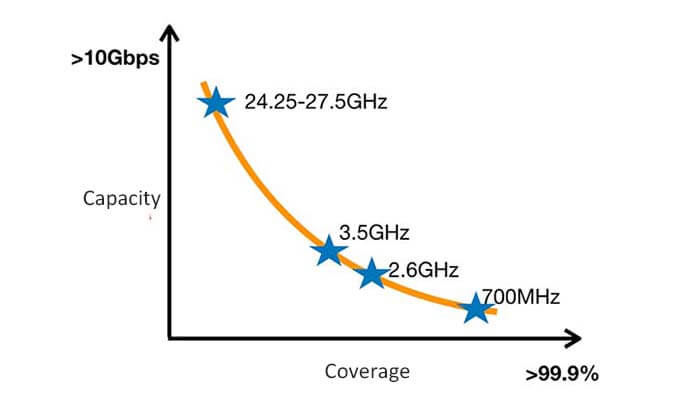Is 600MHz the Next Key Frequency Band for 5G?
As the demand for faster and more reliable wireless communication continues to grow, the race to deploy fifth-generation (5G) networks has intensified.
One of the critical factors in 5G deployment is the selection of the frequency band. While higher-frequency bands offer blazing-fast data speeds, they suffer from limited coverage and penetration capabilities. On the other hand, lower-frequency bands provide better coverage and penetration but sacrifice some data speed.
Among these lower-frequency options, the 600MHz band has garnered significant attention due to its potential to strike a balance between coverage and performance. In this blog, we will explore the prospects of 5G in the 600MHz frequency band and whether it could become the new prime frequency for 5G networks.
Understanding the 600MHz Frequency Band
The 600MHz frequency band, also known as the 600MHz spectrum, falls in the low-frequency range and was previously used for analog TV broadcasting.
As countries transitioned to digital TV, a substantial portion of this spectrum became available for other uses. Regulatory bodies auctioned off this spectrum to mobile network operators for the deployment of next-generation wireless services, including 5G.

Prospects of 5G in the 600MHz Band
- Extended Coverage:
One of the most significant advantages of the 600MHz band is its ability to provide extended coverage. Lower-frequency signals can travel greater distances and penetrate obstacles like buildings and walls more effectively. This characteristic makes the 600MHz band suitable for providing wide-area coverage in both urban and rural regions, where deploying higher-frequency bands would be more challenging and costly.
- Improved Indoor Penetration:
The 600MHz band’s lower frequency allows it to penetrate buildings and structures more effectively than higher-frequency bands. This is crucial for providing seamless indoor coverage in offices, shopping malls, and other urban environments where users spend a significant portion of their time.
- Reduced Infrastructure Costs:
Deploying 5G infrastructure in higher-frequency bands requires a higher density of cell sites due to their limited coverage range. In contrast, the 600MHz band’s extended coverage capabilities reduce the number of required cell sites, resulting in cost savings for network operators.
- Spectrum Availability:
The 600MHz spectrum has become increasingly available worldwide due to the transition from analog to digital TV broadcasting. This has made it a prime candidate for 5G deployment, and many countries have already allocated this band for mobile networks.
- Balanced Performance:
While the 600MHz band may not provide the same ultra-fast data speeds as higher-frequency bands like mmWave, it strikes a balance between coverage and performance. It offers respectable data speeds while ensuring widespread coverage, making it an attractive option for deploying 5G networks that cater to diverse user needs.

Conclusion
The 600MHz frequency band holds immense promise as a critical player in the 5G revolution. Its extended coverage, improved indoor penetration, and reduced infrastructure costs make it a compelling choice for network operators seeking to provide comprehensive and reliable 5G connectivity. While higher-frequency bands have their place in specific use cases, the 600MHz band is likely to play a crucial role in bridging the digital divide and providing ubiquitous 5G coverage in both urban and rural areas.
As the 5G ecosystem continues to evolve, we can expect to see the 600MHz band play an increasingly significant role in delivering next-generation connectivity to billions of users worldwide. With its potential to become the new prime frequency band, 5G in the 600MHz spectrum is poised to reshape the way we communicate, work, and experience the digital world.
